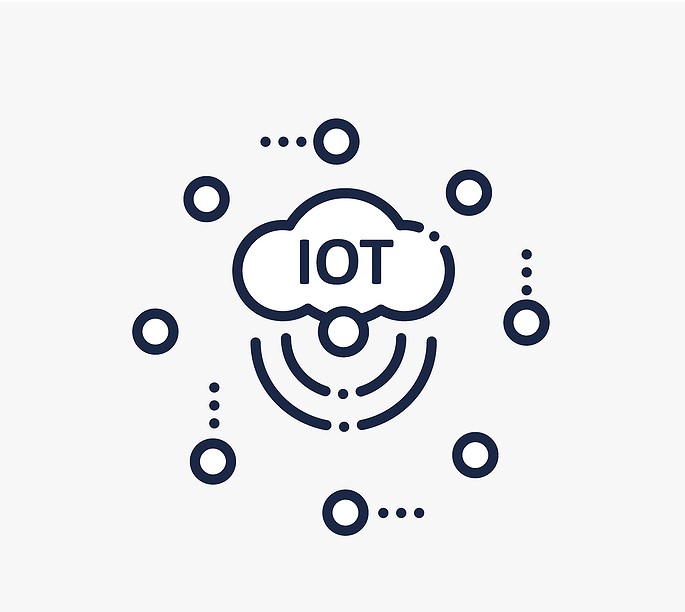Technologies for Monitoring, Tracking, and Offsetting Carbon Emissions
Carbon Tech is a collective term for a group of technologies focused on preventing and removing greenhouse gas carbon dioxide (CO₂) emissions from the atmosphere.

In September 2023, the CTO Unit published a review on Carbon Tech, which included an analysis of technologies for carbon capture, atmospheric carbon removal, and carbon storage and utilization. The current review completes the fourth part of the Carbon Tech ecosystem: technologies for monitoring, tracking, and reducing carbon emissions.
The technologies described in this review are divided into three sections: Carbon Monitoring, Carbon Accounting, and Carbon Offsets:
Carbon Monitoring
Describes technologies for monitoring greenhouse gas emissions from various sources and the status of natural systems that sequester carbon from the atmosphere.
Sensor technologies and software for monitoring greenhouse gas emissions and the status of natural carbon sinks.
Carbon Accounting
Focuses on organizational software technologies designed to help companies track their carbon footprint, report on it, and reduce it.
Technologies from the field of organizational software and data management that enable tracking and reduction of carbon footprints.
Carbon Offsets
Describes companies working to integrate technologies into the carbon offset market, where credits based on projects that reduce carbon emissions can be bought and sold.
Technologies that enable the existence of a carbon offset market, including marketplace management, measurement, verification, and control of credits.

Carbon Climate Monitoring Technologies
Technological solutions can enable carbon monitoring in two key areas: carbon emissions (and other greenhouse gases) and natural carbon sinks (places where carbon is stored outside the atmosphere, such as forests). Carbon monitoring is divided into two main parts: monitoring greenhouse gases in the atmosphere to track emissions and monitoring natural carbon sinks.
 Monitoring Greenhouse Gas Emissions
Monitoring Greenhouse Gas Emissions
The primary greenhouse gases are carbon dioxide (CO₂) and methane. Most emissions originate from economic activities related to the energy or agricultural sectors. Most global emission data comes from calculations and estimates rather than direct measurements. There are emission sources, such as smokestacks at power plants and factories, where it is relatively easy to accurately estimate emissions based on the fuel burned in a specific process. In contrast, estimating emissions that occur dispersedly and due to malfunctions or errors is more complicated. For example, it is difficult to estimate the amount of methane emitted into the atmosphere due to leaks in natural gas infrastructure or the amount of CO₂ released during forest fires. Another area where estimating greenhouse gas emissions and other air pollutants is problematic is in densely populated cities, where much of the pollution is caused by relatively small sources such as residential gas infrastructure, vehicles, and more.
 Ground-Based
Ground-Based
Sensors

In recent years, small and relatively inexpensive satellites equipped with optical or specialized gas sensors for accurately measuring greenhouse gas concentrations have entered the market. These satellites can perform daily, precise measurements over cities, industrial facilities, or natural systems, providing a relatively reliable estimate of emissions at high resolution. Remote sensing using drones or aircraft can detect methane leaks from gas and oil infrastructure, which is cheaper than satellites. Companies in this field include Planet, which provides a variety of satellite-based platforms for monitoring emissions from diverse sectors, and GHGSat, which operates 12 satellites for monitoring greenhouse gases and a platform for data analysis across various sectors. Other companies are developing dedicated solutions for specific sectors, such as SeekOps, which produces drones to monitor emissions from methane leaks in gas and oil infrastructure.
 Data Processing
Data Processing
and Analysis

Raw data from measurements, mainly if sourced from continuous satellite measurements, can be challenging to interpret and not always beneficial. Therefore, companies are working to analyze data from private sensors and integrate it with information from public satellites (such as those from the European Union) and complementary data like weather forecasts, information on built-up areas, and more.
Combining these data sets provides valuable insights regarding patterns and trends in greenhouse gas emissions from the monitored sources. Software and data technologies can be integrated into products from satellite companies, such as Planet and GHGSat. In contrast, other companies, such as Blue Sky Analytics and Kayrros, emphasize the analysis of data from various sources (not necessarily satellites operated by the company).
 Satellites and
Satellites and
Remote Sensing

Small ground-based IoT sensors in cities can measure greenhouse gas emissions and other air pollutants at high resolution from small, ground-level sources (e.g., vehicles). Small ground-based sensors using laser or LiDAR technology can detect methane leaks in oil and gas infrastructure such as pipelines and storage facilities. These sensors are usually manual and are used only periodically or as needed. Companies in this sector include QLM, which manufactures LiDAR sensors primarily used in the oil and gas industry, and Aclima, which focuses on urban emissions monitoring using mobile sensors.
 Monitoring the Condition of Natural Carbon Sinks
Monitoring the Condition of Natural Carbon Sinks
Carbon sinks are ecological systems that naturally fix CO₂ from the atmosphere into biomass. The central carbon sinks are forests, soils, wetlands, and oceans. Carbon sinks are critical to the ability to achieve net-zero greenhouse gas emissions. Therefore, preserving them and ensuring these systems’ continued carbon sequestration is paramount. However, traditional methods for measuring carbon stored in natural systems rely on manual measurements and estimates, which do not allow for close monitoring of the health of ecological systems or the exact amounts of carbon sequestered. Monitoring carbon sinks is also crucial in the carbon credit market, as will be expanded upon later in this review.
> Satellites and Remote Sensing
Several companies in the market use nano-satellites to take high-resolution images of terrestrial natural systems, focusing on forests and soils. These images allow for tracking changes in land cover caused by deforestation or significant wildfires. One company in this field is Planet, which provides a variety of geographic information types, including ecosystem monitoring and carbon sinks from satellite imagery and other sources. There are also startups focusing on carbon monitoring in specific scenarios, such as Flash Forest, which specializes in tree planting and uses technologies to monitor the growth of reforested areas.
> Data Processing and Analysis
Advanced processing tools are required to deeply understand the state of carbon sinks. Companies in this field (e.g., Terraformation and Pachama) typically integrate data analysis with other components, such as sensors or remote sensing, to analyze the data collected through various methods; Moreover, they conduct simulations to calculate the amount of carbon sequestered or released from the sink based on changes in ecological systems.
> Ground-Based Sensors
Various types of sensors can be adapted to monitor different parameters in carbon sinks. For example, laser-based sensors, LiDAR, and infrared sensors installed on towers, drones, or light aircraft can be used to measure greenhouse gas concentrations in the air carbon sinks or track the condition of the different systems. In oceans, cameras and sensors installed on autonomous vessels or submersible drones can monitor different parameters in underwater ecosystems. Various companies worldwide are developing technologies in this area, such as the Brazilian company Treevia, which uses IoT sensors for forest monitoring, and companies like SeaDeep and SoFar for ocean monitoring.

Carbon Footprint Management and Carbon Accounting
Carbon accounting is the process of calculating and tracking the greenhouse gas emissions of organizations to determine their carbon footprint – the total amount of greenhouse gases emitted into the atmosphere due to their activities. In recent years, many businesses have made commitments to reduce carbon emissions, and governments have implemented regulations requiring organizations to report emissions and take action to reduce them, using tools like carbon taxes. A significant development in the carbon accounting market is the European directive that came into effect in 2023, requiring companies operating in Europe to report environmental parameters in addition to financial reporting starting in 2024 (CSRD). Additionally, the global trend of ESG (Environmental, Social, and Governance) investments is gaining momentum. ESG investments consider environmental, social, and governance risks to increase the long-term success chances of companies. Due to growing investor interest in ESG issues, leading global companies publish reports on carbon emissions and other greenhouse gases.
In light of these trends, the importance of technological tools that enable accurate, fast, and easy carbon accounting is growing.
Currently, the standard method for carbon accounting is manual and outdated. The calculation process involves examining an organization’s purchasing history, contacting suppliers to determine the carbon footprint of the materials used, and calculating the accumulated emissions from various supply chains and the organization’s energy consumption. Due to this long and cumbersome process, most organizations that report their carbon emissions do so annually and in aggregated form. Such reports, lacking resolution and timeliness, make it difficult for managers to make real-time decisions that would reduce greenhouse gas emissions, such as purchasing from suppliers with a lower carbon footprint. To enable organizations to access all the information they need to make real-time decisions, a technological system is required to facilitate information sharing between suppliers and consumers and calculate greenhouse gas emissions in real-time at a specific product level.
The digitization of carbon accounting processes will improve the accuracy and reliability of reports. Additionally, creating infrastructure for collecting and sharing data between organizations will enable data-driven decision-making at the specific product level. This means that instead of collecting emissions data annually for reporting purposes, companies can collect product-specific emissions data in real time and make informed decisions regarding subcontractor selection, production processes, transportation choices, and more. To enable such calculations, all participants in the product supply chain must report their emissions in a standardized format, with high resolution, in a system accessible to all stakeholders. This way, when calculating the total emissions for a specific product or process, all the information will be available for immediate calculation.
Companies operating in this space include Watershed, Persefoni, Sinai Technologies, and PlanA. In addition, software companies such as SAP, Microsoft, and Salesforce have developed carbon accounting solutions, recognizing the growing importance of this field.
Several initiatives worldwide are working on the standardization and unification of carbon accounting to promote interoperability within the industry, allowing for the comparison and use of data between different organizations. One initiative, The Carbon Call, brings together industry players to advance more reliable and interoperable carbon accounting. Another initiative, OpenClimate, works to create an open-source infrastructure that aggregates carbon accounting reports to track emissions across various organizational levels (countries, regions, companies, cities, etc.).

Technologies in the Carbon Offset Market
Carbon credits are a financial mechanism that allows organizations to offset their greenhouse gas emissions by funding projects that reduce carbon emissions elsewhere. Thus, organizations can claim to meet emission reduction targets without actually reducing their emissions.
Carbon offsetting takes place in two markets: a compliance market, where countries are required to reduce their carbon emissions under a binding international agreement (such as the Kyoto Protocol or the European Union Emission Trading Scheme); and a voluntary market, where private companies and other organizations not obligated to reduce emissions under an international agreement. Both markets can purchase carbon offsets to declare a reduction in their carbon footprint and meet emission reduction targets. The voluntary market is not subject to global or national regulations regarding the quality or reliability of the sold credits.
Offsets are divided into two main types:
- Emission prevention: A credit that directs its cost toward funding projects that prevent carbon dioxide emissions from being released into the atmosphere. E.g., preserving natural systems where degradation would lead to carbon emissions or financing renewable energy projects that replace polluting power plants. Another option in the prevention field is emission reduction credits, which are earned by reducing emissions beyond what is legally required, such as by installing carbon capture systems or improving energy efficiency.
- Carbon removal: This credit is purchased to fund the removal of carbon already in the atmosphere, through natural solutions such as reforestation or technological solutions for atmospheric CO₂ removal. A report published by the CTO in October 2023 provides an overview of these technologies.
It is important to note that various parties have criticized the carbon offset sector, arguing that the contribution of purchasing different types of credits to global emissions reduction is not significant. There is fundamental criticism from organizations and researchers who claim that the existence of a carbon offset market serves as a “license to pollute” because companies are provided with a negative incentive not to reduce their greenhouse gas emissions from their activities, but instead to continue polluting as usual and purchase carbon offsets equivalent to their emissions. Another criticism concerns not the credit market’s existence but its quality. Investigations by several journalistic organizations and government bodies in countries where the projects are located have revealed that specific carbon credit projects, especially those based on reforestation, do not meet the claims made by the organizations marketing them regarding the amount of carbon sequestered.

 Marketplace Technologies for Purchasing Credits
Marketplace Technologies for Purchasing Credits
Given the demand for carbon offsets, including among companies and organizations not subject to binding international agreements, there is a market for platforms that allow the simple and quick purchase of verified credits. According to PitchBook, by the end of 2022, 138 companies were operating in the carbon credit marketplace, raising $2.7 billion.
The trading platforms provide four primary services:
![]() Aggregation: Grouping various offset projects from around the world to allow users to review and select the required carbon offsets.
Aggregation: Grouping various offset projects from around the world to allow users to review and select the required carbon offsets.
![]() Interface: Creating the infrastructure that facilitates communication between credit suppliers and buyers.
Interface: Creating the infrastructure that facilitates communication between credit suppliers and buyers.
![]() Assistance and Consulting: Supporting credit suppliers in converting a physical asset into a credit that can be verified and sold.
Assistance and Consulting: Supporting credit suppliers in converting a physical asset into a credit that can be verified and sold.
![]() Verification: Reviewing the projects intended for sale and verifying that they meet the criteria to be considered carbon offsets. The accepted rules for carbon offsets require projects to meet the following conditions:
Verification: Reviewing the projects intended for sale and verifying that they meet the criteria to be considered carbon offsets. The accepted rules for carbon offsets require projects to meet the following conditions:
- “Additionality”: Proof that the carbon offset would not have occurred without the funding from the credit sale. For example, if the offset results from establishing a renewable energy project, it must be ensured that it would not have been built without the offset funding.
- Leakage Prevention: Ensuring that the project driving the offset does not cause indirect carbon emissions that exceed the offset amount.
- Permanence: Ensuring the offset carbon is permanently removed from the atmosphere.
- Exclusivity: Only one entity can carry out each offset project, and the credit can be sold to only one entity.
 Measurement, Reporting, and Verification of Carbon Credits – MRV
Measurement, Reporting, and Verification of Carbon Credits – MRV
To ensure the proper functioning of the carbon market, a system is required to track projects, credits, and purchases to verify the integrity of market activities. This field is called MRV (Measurement, Reporting, and Verification). Currently, most of the credits on the market are verified and reported by non-profit organizations, the largest of which is Verra. These organizations, as new startups entering the market recently, are working to integrate technologies into the MRV processes. One aspect of MRV technologies is measurement. Carbon monitoring technologies, as described in this review, are used to measure carbon emissions reduction or carbon sequestration (depending on the type of credit). The other two aspects, reporting, and verification, are essential to ensure that every carbon credit sold represents the amount of carbon sequestered, as measured by monitoring means, and that each credit is used for offsetting only once. Efficient digital registration is needed to track the growing carbon credit market and enable the required monitoring. Various organizations in the industry are working to promote the use of more advanced digital tools for tracking.
There may be potential in this field for the use of blockchain technology. Blockchain-based tokens have the advantage of creating an agreed-upon record of all transactions occurring within the system. Several startups are attempting to use this technology to develop blockchain-based carbon credits that will allow documentation and tracking of credit quality and the history of its buyers. Two leading organizations trying to integrate blockchain technologies into the carbon market are the OpenLab project at Yale University and the Blockchain for Climate Foundation.

Summary and Conclusions
Carbon management refers to the strategic effort to reduce, offset, and ultimately eliminate greenhouse gas (GHG) emissions, primarily carbon dioxide. It encompasses a wide range of strategies to mitigate climate change by reducing and offsetting CO₂ emissions. Carbon management is essential in addressing climate change and building a more sustainable future. To implement effective strategies, overcome challenges, and achieve a zero-emissions world, collective efforts from individuals, businesses, and governments are required.
Out of the 24 companies operating in the field in Israel, more than half were established in the last two years, with 2022 being a record year in which nine companies were founded. Only a quarter of the companies submitted applications for support from the IIA. Five of the six companies that applied to the authority were approved for grants, representing 83% of the applicants.
Key Aspects of Carbon Management:
![]() Measurement and Monitoring: Tracking emissions and progress towards reduction targets is essential for effective carbon management. This includes reporting, data analysis, and the use of established metrics and frameworks.
Measurement and Monitoring: Tracking emissions and progress towards reduction targets is essential for effective carbon management. This includes reporting, data analysis, and the use of established metrics and frameworks.
![]() Carbon Accounting: Calculating and tracking organizations’ greenhouse gas emissions involves digitizing, optimizing, and standardizing processes, as well as adopting technologies that reduce CO₂ emissions.
Carbon Accounting: Calculating and tracking organizations’ greenhouse gas emissions involves digitizing, optimizing, and standardizing processes, as well as adopting technologies that reduce CO₂ emissions.
![]() Emission Offsets: Offsets can be used to compensate for emissions that cannot be reduced. These options include investing in projects that remove or store carbon dioxide, such as tree planting, carbon capture and storage technologies, and supporting renewable energy initiatives.
Emission Offsets: Offsets can be used to compensate for emissions that cannot be reduced. These options include investing in projects that remove or store carbon dioxide, such as tree planting, carbon capture and storage technologies, and supporting renewable energy initiatives.
Benefits:
1. Fighting Climate Change: Carbon management is crucial in reducing the impacts of climate change, including extreme weather events, rising sea levels, and biodiversity loss.
2. Environmental and Economic Benefits: Reducing emissions can lead to cleaner air, healthier ecosystems, and decreased reliance on fossil fuels, ultimately saving costs and promoting sustainable development.
3. Competitive Advantage: Businesses and organizations that actively manage their carbon footprint can attract investors, improve customer loyalty, become part of the value chain for larger companies, and demonstrate their commitment to environmental responsibility. Emission reductions can be marketed to customers and consumers to highlight their ecological commitment. In a world where consumers care more about corporate social responsibility, taking action to reduce climate impacts helps businesses stand out.
Challenges:
1. High Costs and Technological Barriers: Implementing new carbon management technologies and infrastructures can be expensive, and some solutions are still in the early stages of development.
2. Policy and Regulation: Government policies and regulations that encourage or hinder emission reductions can influence the effectiveness of carbon management efforts.
3. Social and Behavioral Changes: Transitioning to a low-carbon society requires addressing public perception, changing ingrained habits, adopting new technologies, and promoting sustainable lifestyles.
Current trends indicate a global increase in focus on achieving carbon neutrality goals, heightened investment in renewable energy and carbon capture technologies, growth in the carbon market and offset programs and increasing awareness of the benefits of carbon management. However, since the carbon market is global, achieving widespread adoption of technologies in the field requires significant changes in global regulation or a breakthrough in technology. Given our limited influence on global regulation, efforts should focus on strengthening technological innovation to integrate the Israeli industry.
* All information provided in this article is correct as of the date of writing and according to the data available to the author. The Innovation Authority or anyone on its behalf is not responsible for the accuracy, truthfulness, and precision of the data, in whole or in part. The article is published for the public’s benefit, and no commercial use should be made of it, including for its sale, distribution, or presentation.
